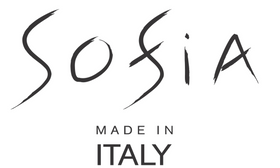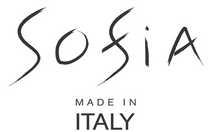Traditional Dress of Italy
Italy, renowned for its rich history, diverse culture, and exquisite cuisine, also boasts a fascinating array of traditional clothing that reflects the nation's deep-rooted heritage. Italian traditional dress varies significantly across regions, displaying a tapestry of styles, colours, and designs that often align with local customs and historical influences.

One of the most iconic traditional garments in Italy is the folk costume known as the "traje," worn in regions like Sardinia. The traje for women typically consists of a vibrant, multi-layered skirt paired with a beautifully embroidered blouse. Intricate details, such as handwoven patterns and lace, adorn these garments, highlighting the artistry passed down through generations. Women often complement the ensemble with elaborate jewellery and headdresses that differ from village to village, adding a distinct touch to the overall attire.

In Southern Italy, particularly in regions like Calabria and Sicily, traditional dress reflects a blend of historical influences from various civilizations, including Greek, Roman, and Arab. Women's attire in these areas may include colourful, flowing skirts, embellished blouses, and shawls with intricate patterns. Gold jewellery is a common accessory, symbolizing prosperity and cultural pride. Men's traditional dress often includes embroidered vests, wide-brimmed hats, and sashes, creating a striking and proud appearance that pays homage to the region's rich history.

Moving north to Tuscany and Umbria, traditional Italian dress takes on a more modest and refined character. Women's clothing may feature simple yet elegant dresses with subdued colours, often accompanied by delicate aprons and headscarves. Men, on the other hand, might wear tailored jackets, vests, and wide-brimmed hats, reflecting a more reserved and classical aesthetic. This style mirrors the influence of Renaissance fashion, highlighting a timeless elegance that persists in contemporary interpretations of Italian attire.

In Venice, the historic city of canals, a unique and extravagant costume known as the "Carnevale" attire emerges during the annual Venice Carnival. Ornate masks, luxurious fabrics, and opulent accessories characterize this elaborate dress. The Carnevale costume represents a celebration of artistic expression, with participants donning outfits inspired by historical figures, theatrical characters, and fantasy elements. The lavish costumes and masks contribute to the festive atmosphere, making the Venice Carnival a spectacle that attracts visitors from around the world.

Italy's traditional dress not only reflects regional diversity but also serves as a visual narrative of the country's historical evolution. The intricate details, vibrant colours, and unique accessories tell stories of cultural exchanges, artistic influences, and the resilience of traditions. While contemporary fashion has become increasingly prevalent in Italy, especially in urban centres like Milan, the traditional attire continues to play a significant role in festivals, ceremonies, and cultural events, preserving the nation's rich heritage for future generations. As Italy embraces modernity, its traditional dress remains a captivating testament to the enduring legacy of its people.









